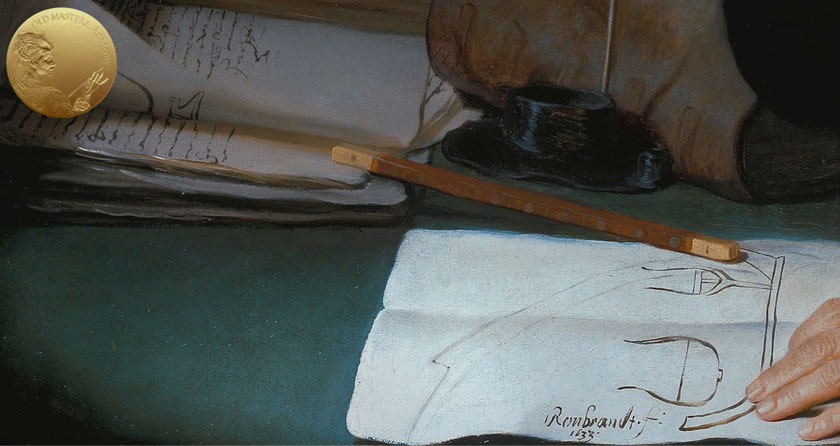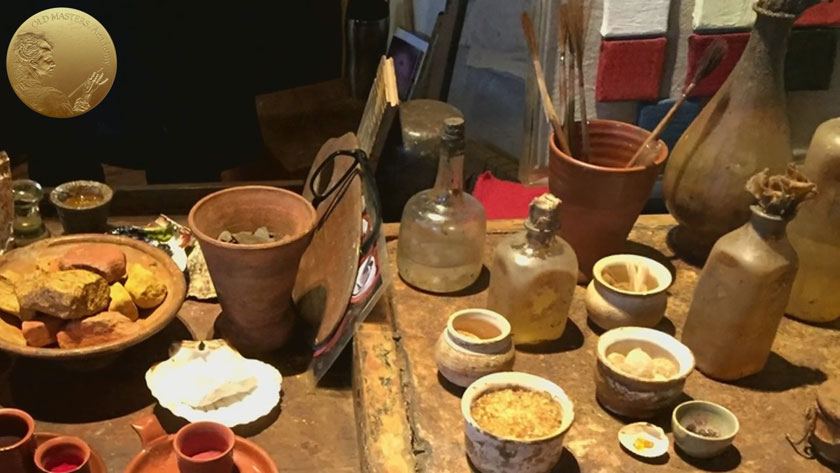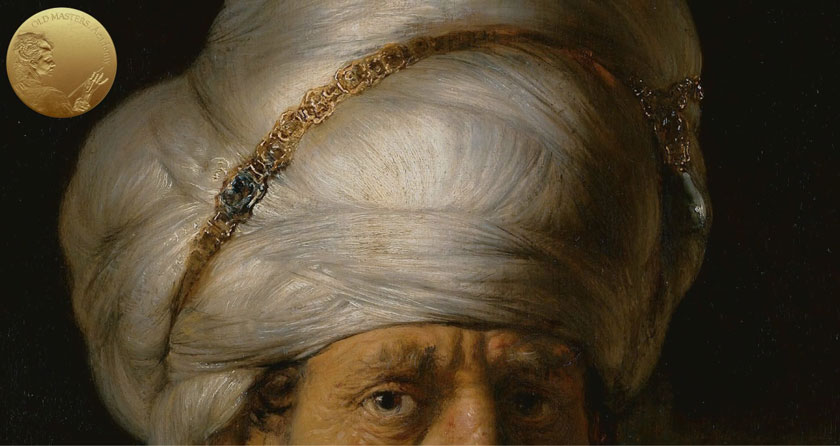Art Lesson 38, Part 12
Find out what Oil Painting Mediums Rembrandt Used in his Artworks
Learn how to paint like the Old Masters!
Old Masters Academy Online Course
Self-study, self-paced online video courseLifetime membershipOne-time payment: $487Enroll Now!Personal Tutoring online + Online Course
Unlimited tutoring by the Academy teachersLifetime membershipOne-time payment: $997Enroll Now!« Back to the Art Lessons List
What Oil Painting Mediums Rembrandt Used in his Artworks
The purpose of a medium is to bind the pigments in oil paint. The choice of medium and proportions to the pigment determines paint handling properties and the optical effect achieved with such paint. Traditionally, linseed, walnut, and poppyseed oils were used as mediums. Linseed oil is a faster drying medium, but tends to yellow more than walnut and poppyseed oils with time. That is why walnut and poppyseed oils are recommended for white paints and light mixes.

Examinations of Rembrandt’s paintings – by the National Gallery Scientific Department and other research teams – reveal the surprising simplicity of Rembrandt’s choice of binding media.
Research shows that Rembrandt and his circle used linseed oil. Sometimes, he also used walnut oil, but not specifically to reduce yellowing. There is no evidence found that suggests he used any resins or other materials with similar qualities to alter the optical properties of the top layers. All optical effects are achieved, in fact, with pigments mixed with oil.

Historically, it was believed that linseed oil, as a medium, was not enough to produce a wide range of subtle optical transitions and textures. That’s why many theories emerged about Rembrandt’s “secret” mediums, and many artists and manufacturers speculated about various “know-how” recipes.
Rembrandt most likely used stand oil, which influences the transparency of paint and saturation of color, and gives paint more body and modifies its flow.

Over time, paints made with oil mediums become more transparent and darker, and changes in color to warmer tints. Rembrandt most likely did not understand the extent of these changes and it is very unlikely that he could foresee how his painting would look in hundreds of years.




